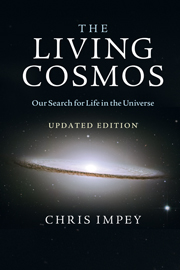2 - LIFE'S ORIGINS
Published online by Cambridge University Press: 05 August 2011
Summary
However, the macromolecule-to-cell transition is a jump of fantastic dimensions, which lies beyond the range of testable hypothesis. In this area, all is conjecture.
–David Green and Robert Goldberger, Molecular Insights into the Living ProcessThe travelers look out onto the shore of a strange and hostile world. They don't leave the spacecraft; a probe shows that the atmosphere is mostly nitrogen, with smaller but lethal amounts of sulfur dioxide and methane and a hint of ammonia. Volcanoes belch gases into the sky, and the spacecraft trembles every few minutes from seismic activity. A young star, orange and bloated, perches on the horizon.
It's a young planet. The newly minted crust is still warm and plastic. Oceans have recently condensed from steam and are still kept warm and turgid by geothermal energy. Samples drilled from the crust show an age of two hundred million years—only 2 percent of cosmic time and the same fraction of the time the star will provide warmth to this planet.
Working swiftly, the visitors wrap up their experiments. It's not safe here. This soon after its formation, the planetary system is still strewn with debris. Every hour or so, the spacecraft shudders as a meteor slams into the ground nearby. There's a continuous light show overhead as smaller fragments burn up in the atmosphere. The large moon looming in the sky, which was splashed off an earlier impact, is a reminder of the potential for devastation.
- Type
- Chapter
- Information
- The Living CosmosOur Search for Life in the Universe, pp. 51 - 92Publisher: Cambridge University PressPrint publication year: 2011



